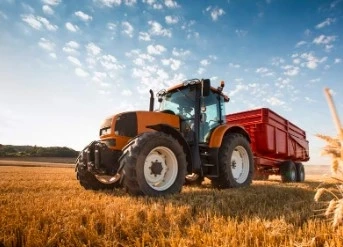The tractor industry is at the forefront of the precision farming revolution, with advanced technologies transforming the way agricultural operations are conducted. This executive summary explores the latest developments in precision farming technologies for tractors, highlighting the market dynamics, growth opportunities, and the impact on the industry.
Market Overview
The global precision farming technology market for tractors was valued at $8.2 billion in 2021 and is projected to reach $15.8 billion by 2026, growing at a CAGR of 14.1% during the forecast period. This growth is driven by the increasing adoption of precision farming solutions, the need for improved productivity and efficiency in agricultural operations, and the rising demand for data-driven decision-making in the farming sector.
GPS-Guided Tractor Systems
GPS-guided tractor systems are at the core of precision farming technologies, enabling farmers to optimize field operations, reduce input costs, and improve crop yields. These systems utilize GPS, GNSS, and other positioning technologies to provide accurate guidance, auto-steering, and variable-rate application capabilities. The global market for GPS-guided tractor systems is expected to grow at a CAGR of 12.9% from 2021 to 2026, reaching a value of $7.1 billion.
Variable Rate Technology (VRT)
Variable Rate Technology (VRT) allows tractor operators to adjust the application rates of inputs, such as fertilizers, pesticides, and seeds, based on real-time data and field conditions. This technology helps farmers optimize resource utilization, minimize waste, and enhance crop performance. The global VRT market for tractors is projected to grow at a CAGR of 15.2% from 2021 to 2026, reaching a market size of $4.3 billion.
Tractor-Mounted Sensors and Telematics
Tractor-mounted sensors and telematics systems are transforming the way farmers monitor and manage their operations. These technologies collect and analyze data on soil conditions, crop health, equipment performance, and other key parameters, enabling data-driven decision-making and predictive maintenance. The global market for tractor telematics is expected to grow at a CAGR of 13.7% from 2021 to 2026, reaching a value of $3.2 billion.
Autonomous and Semi-Autonomous Tractors
The development of autonomous and semi-autonomous tractor technologies is a game-changer in precision farming, allowing for increased efficiency, reduced labor costs, and improved operational consistency. These advanced systems can perform tasks such as plowing, seeding, and harvesting with minimal human intervention. The global market for autonomous tractors is projected to grow at a CAGR of 16.3% from 2021 to 2026, reaching a market size of $3.5 billion.
Market Opportunities and Challenges
The integration of precision farming technologies in the tractor market presents both opportunities and challenges for industry players:
Opportunities:
Improved Productivity and Efficiency: Precision farming solutions can significantly enhance agricultural productivity and operational efficiency, driving demand for tractor manufacturers.Data-Driven Decision Making: The wealth of data generated by precision farming technologies can enable farmers to make more informed decisions, leading to better resource management and higher crop yields.Sustainability and Environmental Benefits: Precision farming can contribute to more sustainable agricultural practices by reducing input usage, minimizing waste, and improving overall environmental impact.Challenges:
Upfront Costs: The initial investment required for precision farming technologies, such as GPS-guided systems and autonomous tractors, can be a barrier for some farmers, particularly in developing regions.Connectivity and Data Management: Ensuring reliable connectivity and effective data management across precision farming systems can be a complex and critical challenge for tractor manufacturers and farmers.Skill Development: The adoption of advanced precision farming technologies necessitates training and skill development for tractor operators and farm managers to fully leverage the capabilities of these systems.Conclusion
The tractor market is at the forefront of the precision farming revolution, with advanced technologies transforming the way agricultural operations are conducted. By embracing GPS-guided systems, variable rate technology, tractor-mounted sensors, and autonomous/semi-autonomous capabilities, tractor manufacturers can provide farmers with innovative solutions that enhance productivity, efficiency, and sustainability. As the demand for precision farming continues to grow, tractor companies that invest in these cutting-edge technologies and address the associated challenges will be well-positioned to capture market share and drive the future of the agricultural industry.


